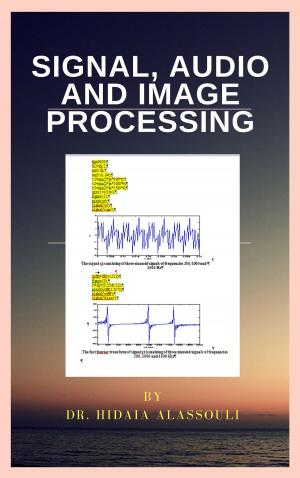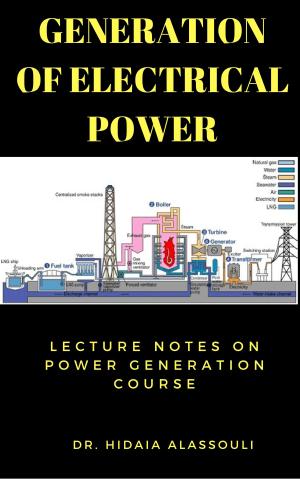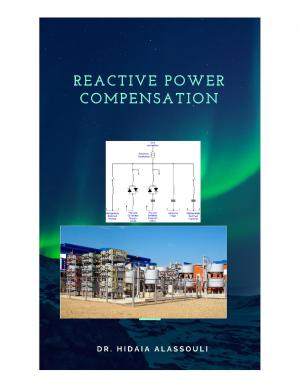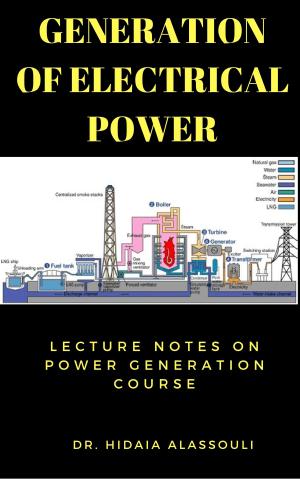| Author: | Dr. Hidaia Alassouli | ISBN: | 9781370206476 |
| Publisher: | Dr. Hidaia Alassouli | Publication: | February 11, 2018 |
| Imprint: | Smashwords Edition | Language: | English |
| Author: | Dr. Hidaia Alassouli |
| ISBN: | 9781370206476 |
| Publisher: | Dr. Hidaia Alassouli |
| Publication: | February 11, 2018 |
| Imprint: | Smashwords Edition |
| Language: | English |
This book includes my lecture notes for electrical power distribution book. The fundamentals of electrical power distribution are applied to various distribution system layouts and the function of common distribution system substations and equipment. The book introduces the design procedures and protection methods for power distribution systems of consumer installations. Circuit simulation and practical laboratories are utilised to reinforce concepts.
The book is divided to different learning outcomes
•CLO 1- Discuss the fundamental concepts related to electrical distribution systems.
•CLO 2- Explain the role of distribution substations and related equipment.
•CLO 3- Outline standard methods for power distribution to consumer installations.
•CLO 4- Apply short-circuit and over-load protection principles for electrical installations
a) CLO1- Discuss the fundamental concepts related to electrical distribution systems.
•Principle of operation of transformers.
•Explain the role of the distribution system in a power system, common distribution system layouts, and common voltages, voltage drops and regulation levels from transmission to distribution.
•Discuss demand, power quality issues, calculate factors affecting design, and interpret the load curve profile for load demand.
•Explain how tariff is calculated and charged consumers
b) CLO2- Explain the role of distribution substations and related equipment.
•Explain the function of the distribution substation in view of distribution system layout
•Explain the use of transmission, grid, primary and distribution substations a power system.
•Explain the use of various types of bus-bar configurations in distribution substations.
•Discuss the use of cabling, transformers, circuit breakers, switches, reclosers, and sectionalisers in a distribution system.
c) CLO3- Outline standard methods for power distribution to consumer installations.
•Discuss commonly used methods for low voltage power supply systems (TN, TN-C, TN-C-S and TT).
•Discuss the main features of a one-line, electrical installation diagram and related symbols.
•Discuss electrical color codes and factors affecting cable installations.
•Design an electrical feeder by (1) selecting the design current, (2) selecting the overload current protection, (3) determining the applicable correction factors, (4) selecting the current-carrying capacity of cable and cable sizing, and (5) calculating the allowable voltage drop in feeder
d)CLO4- Apply short-circuit and over-load protection principles for electrical installations.
•Explain the meaning of overload and over-current and methods of protection
•Discuss the nature of electric shock, need for earthing, earth loop impedance, and principle of protective multiple earthing.
•Explain the principles of fuse/MCB selection in relation to feeder protection under overload and short circuit fault conditions.
•Explain the operation of earth leakage circuit breakers (ELCB) and residual current device (RCD).
This book includes my lecture notes for electrical power distribution book. The fundamentals of electrical power distribution are applied to various distribution system layouts and the function of common distribution system substations and equipment. The book introduces the design procedures and protection methods for power distribution systems of consumer installations. Circuit simulation and practical laboratories are utilised to reinforce concepts.
The book is divided to different learning outcomes
•CLO 1- Discuss the fundamental concepts related to electrical distribution systems.
•CLO 2- Explain the role of distribution substations and related equipment.
•CLO 3- Outline standard methods for power distribution to consumer installations.
•CLO 4- Apply short-circuit and over-load protection principles for electrical installations
a) CLO1- Discuss the fundamental concepts related to electrical distribution systems.
•Principle of operation of transformers.
•Explain the role of the distribution system in a power system, common distribution system layouts, and common voltages, voltage drops and regulation levels from transmission to distribution.
•Discuss demand, power quality issues, calculate factors affecting design, and interpret the load curve profile for load demand.
•Explain how tariff is calculated and charged consumers
b) CLO2- Explain the role of distribution substations and related equipment.
•Explain the function of the distribution substation in view of distribution system layout
•Explain the use of transmission, grid, primary and distribution substations a power system.
•Explain the use of various types of bus-bar configurations in distribution substations.
•Discuss the use of cabling, transformers, circuit breakers, switches, reclosers, and sectionalisers in a distribution system.
c) CLO3- Outline standard methods for power distribution to consumer installations.
•Discuss commonly used methods for low voltage power supply systems (TN, TN-C, TN-C-S and TT).
•Discuss the main features of a one-line, electrical installation diagram and related symbols.
•Discuss electrical color codes and factors affecting cable installations.
•Design an electrical feeder by (1) selecting the design current, (2) selecting the overload current protection, (3) determining the applicable correction factors, (4) selecting the current-carrying capacity of cable and cable sizing, and (5) calculating the allowable voltage drop in feeder
d)CLO4- Apply short-circuit and over-load protection principles for electrical installations.
•Explain the meaning of overload and over-current and methods of protection
•Discuss the nature of electric shock, need for earthing, earth loop impedance, and principle of protective multiple earthing.
•Explain the principles of fuse/MCB selection in relation to feeder protection under overload and short circuit fault conditions.
•Explain the operation of earth leakage circuit breakers (ELCB) and residual current device (RCD).















